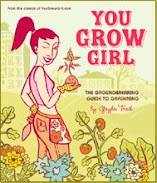Since we're on the topic of prepare ahead meals and the things that can be frozen, I thought I'd add a list of vegetables that can be frozen.
Leafy vegetables such as cabbage, celery, cress, cucumbers, endive, lettuces, fresh herbs, radishes, to name just a few. They just don't freeze well at all. They come out limp and water-logged and squishy. Some potatoes don't freeze well either, they end up mealy and well, yucky.
This isn't to say that you couldn't experiment with some of these in various stages of leaf production or chopped or flash frozen (good luck getting the liquid nitrogen for that). It would really depend but the general rule of thumb is no.
In most all cases, you want to freeze small pieces of whatever you're attempting to freeze. Stick an entire bell pepper in the freezer and then pull it out to thaw and see what happens vs cutting one into strips. There is a huge difference. Smaller pieces face less cell damage from the freezing/thawing process. So make sure to cut it up.
A lot of spices don't do well in the ice box either. They end up with a stronger taste that can over power or they become bitter. Pepper, cloves, garlic, green pepper, imitation vanilla are examples. Stuff like onion and paprika just plain don't taste the same after they've thawed. And to make sure that we're clear, this is raw, not cooked.
Cooked spices can often change their habits when in foods that are frozen, one example is that salt can actually increase rancidity in high fat items on top if losing it initial flavor. Ahem, not that anyone here has a lot of high fat items hanging around the fridge.
As for canning: There are suitable foods for different types of canning.
Fruits suitable for canning: pears, peaches, apricots, apples, plums, pineapple, cherries, blackberries, strawberries, raspberries, blueberries.
Vegetables suitable for canning: peas, corn, carrots, asparagus, tomatoes beans, beets
But then we have another entirely different world, preserving.
Fruits suitable for preserving: strawberries, large currants, plums, quince, grapes, gooseberries, blackberries, cranberries
Then there are jams: strawberries, plums, elderberries, grapes, raspberries, cranberries, blackberries, currants
And marmalades: apricot, plums, peaches, apple - sweet, sour crabapple, cranberry, grapefruit, lemon, quince, orange, yellow tomato
Butters: crabapple, quince, apple, grape
Conserves: plums, oranges, and lemon plums, lemon, raisins grapes, lemon raisins, rhubarb figs, rhubarb peach, lemon, orange peach, currants, lemon pears, lemon, ginger root prunes, lemon, orange orange, grapefruit, lemon kumquat, orange cranberries, lemon, raisins nuts in combination with any of the above
Jelly: Usually made from juicy fruits: strawberries, raspberries, blackberries, elderberries, plums, currants, grapes. Then there are the ones that are less juicy but still suitable: peaches, apricots, quince, cranberries, apples - sweet, sour, crabapple.
Pickling fruits and vegetables: tomatoes - red, yellow, blackberries, cucumbers, peaches, pears, peppers - red, green, green beans, cauliflower, cabbage, beets, onions
Fruits suitable for spicing are: blackberries, peaches, pears, red tomatoes
Fruits suitable for salting are: cucumbers, large and small
Fruits suitable for drying are: currants, grapes, peaches, pears, apricots, plums, prunes, cranberries, apples - sweet, sour, tomato
This by no means a complete list and I have recipes for canning that defy some of these guidelines. It's really all in experimentation.
April is the cruellest month.
1 day ago












0 comments:
Post a Comment